Medieval History Old Ncert Satish Chandra Notes contains – For Year = 2024, Pages = 67 Pages, Format = Pdf, Buy All in One combo and Get More Discount & Benefits = Click Here
|| Content of Medieval History Old Ncert Notes ||
- Chapter: 1 – India & The World
- Chapter: 2 – Northern India: Age Of The Three Empires (800-1000)
- Chapter: 3 – South India: The Chola Empire (900-1200)
- Chapter: 4 – Economic & Social Life, Education and Religious Belief (800-1200)
- Chapter: 5 – Age Of Conflict (Circa 1000-1200)
- Chapter: 6 – The Delhi Sultanat – I (Circa 1200 – 1400)
- Chapter: 7 – The Delhi Sultanat—II (Circa 1300-1400)
- Chapter: 8 – Government, And Economic & Social Life During The Sultanate
- Chapter: 9 – The Age Of Vijaynagara And The Bahamanids and The Coming Of The Portuguese (Circa 1350 – 1565)
- Chapter: 10 – Struggle For Empire in North India (1400-1525)
- Chapter: 11 – Cultural Development in India (1200 – 1500)
- Chapter: 12 – Struggle For Empire in North India – II Mughals and Afghans (1525-1555)
- Chapter: 13 – Consolidation Of Mughal Empire Age Of Akbar
- Chapter: 14 – The Deccan And The South (Up To 1656)
- Chapter: 15 – India In The First Half Of 17th Century
- Chapter: 16 – Economic and Social Life Under Mughals
- Chapter: 17 – Cultural and Religious Developments
- Chapter: 18 – Climax and Disintegration Of Mughal Empire – I
- Chapter: 19 – Climax and Disintegration Of Mughal Empire – II
- Chapter: 20 – Assessment and Review Of Medieval India
|| Brief Introduction of Medieval History Old Ncert Notes ||
Chapter: 1 – India & the World
- Europe
- Growth of Feudalism
- The Arab World
- Africa
- East and South East Asia
Chapter: 2 – Northern India: Age Of the Three Empires (800-1000)
- The Struggle for Domination in North India: The Palas
- The Pratiharas
- The Rashtrakutas
- Political Ideas & Organization
- Territorial Divisions
Chapter: 3 – South India: The Chola Empire (900-1200)
- Rise of the Chola Empire
- Age of Rajaraja & Rajendra I
- Chola Government – Local Self Government
- Cultural Life
Chapter: 4 – Economic & Social Life, Education and Religious Belief (800-1200)
- Trade and Commerce
- Society
- Condition of the People
- The Caste System
- Condition of Women
- Education, Science, and Learning
- Food
- Religious Movements and Beliefs
Chapter: 5 – Age of Conflict (Circa 1000-1200)
- The Ghaznavids
- The Rajput States
- Turkish Conquest of North India
- The Battle of Terrain
- Turkish Conquest of Ganga Valley, Bihar, and Bengal
- Causes of Defeat of the Rajput
Chapter: 6 – The Delhi Sultanat – I (Circa 1200 – 1400)
- The Mameluk Sultans (Thirteenth Century)
- Struggle for the Establishment of a Strong Monarchy
- Iltutmish (1210- 36)
- Raziya (1236-39)
- The era of Balban (1246-87)
- The Mongols and the Problem of the North-West Frontier
Chapter: 7 – The Delhi Sultanat – II (Circa 1300-1400)
- The Khaljis and the Tughlaqs
- The Khaljis (1290-1320)
- Jalal-Ud-Din Firoz Khilji (1290-1296 A.D.)
- Alauddin Khalji
- The Tughlaqs (1320—1412)
- Ghiyas-Ud-Din Tughlug or Ghazi Malik (1320-1325 A.D.)
- Muhammad-Bin-Tughlaq (1325- 1351 A.D.)
- Firoz Tughlaq (1351-1388 A.D.)
- Later, Tughlaqs Successors of Firoz
- End of the Tughlug Dynasty
- The Sayyid Dynasty (1414-1451 A.D.)
- Khizr Khan (1414- 1421 A.D.)
- Mubarak Shah (1421-1434a.D.)
- Muhammad Shah (1434-1445 A.D.)
- Ala-Ud-Din Shah (1 445-1457 A.D.)
- Lodi Dynasty (1451 To 1526)
- Bahlul Lodi (1451 -1489 A.D.)
- Sikandar Shahi (1489-1517 A.D.)
- End of Lodi Dynasty (1517- 1526 A.D.)
- Expansion, Reforms In and Disintegration of Delhi Sultanate
- Disintegration of Sultanate
Chapter: 8 – Government, And Economic & Social Life During The Sultanate
- The Sultan
- Central Administration
- Local Administration
- Judicial Administration
- Military Administration
- Economic & Social Life
- Peasants and Rural Gentry
- Trade, Industry, and Merchants
- The Sultan and Nobles
- Town Life: Slaves, Artisans, and Others
- Caste, Social Manners and Customs
- Nature of State
- Religious Freedom under the Sultan
Chapter: 9 – The Age of Vijaynagara and the Bahamanids and the Coming of the Portuguese (Circa 1350 – 1565)
- The Vijayanagara Empire—Its Foundation and Conflict with the Bahmani Kingdom (1336- 1672 A.D.)
- The Bahamani Kingdom- Its Expansion & Disintegration
- The climax of the Vijayanagara Empire & Its Disintegration
- The Advent of the Portuguese
Chapter: 10 – Struggle for Empire in North India (1400-1525)
- Eastern India – Bengal, Assam, and Orissa
- Western India—Gujarat, Malwa, and Mewar
- Northwest and North India—The Sharqis, The Lodi Sultans, and Kashmir
Chapter: 11 – Cultural Development in India (1200 – 1500)
- Architecture
- Religious Ideas and Beliefs
- The Sufi Movement
- The Chishti and Suharwardi Silsilahs
- Bhakti Movement
- Vaishnavaite Movement
- Literature & Fine Arts
Chapter: 12 – Struggle for Empire in North India – II Mughals and Afghans (1525-1555)
- Central Asia and Babur
- Conquest of India
- The Battle of Panipat (20 April 1526)
- The Afghans
- Significance of Babur’s Advent into India
- Humayun’s Conquest of Gujarat and Tussle with Sher Shah
- Sher Khan (Upscsummarynotes.Com)
- Sher Shah and the Sur Empire (1540–55)
- Contribution of Sher Shah
Chapter: 13 – Consolidation of Mughal Empire Age of Akbar
- Early Phase Contest with Nobility (1556 – 67)
- Early Expansion of the Empire (1560 -76)
- Administration
- Mansabdari System Ad the Army
- Organization of Government
- Relation with the Rajputs
- Rebellions & Further Expansion of the Mughal Empire
- Toward Integration: State, Religion & Social Reforms
Chapter: 14 – The Deccan and the South (Up To 1656)
- Mughal Advance to Deccan
- Conquest of Berar, Ahmednagar, and Khandesh
- Rise of Malik Amber and Mughal’s Frustration of Mughal Attempt at Consolidation
- Extinction of Ahmednagar and Acceptance of Mughal Suzerainty by Bijapur and Golconda
- Cultural Contribution of Deccan States
Chapter: 15 – India in the First Half of 17th Century
- Political and Administrative Developments in India
- Nur Jahan
- Shah Jahan’s Rebellion
- Mahabat Khan
- Foreign Policy of Mughals
- Akbar and Uzbeks
- Relations with Iran & the Question of Qandahar
- Shah Jahan’s Balkh Campaign
- Mughal Persian Relations – The Last Phase
- Growth of Administration
Chapter: 16 – Economic and Social Life under Mughals
- Standard Of Living: Pattern of Village Life and the Masses
- The Ruling Class: The Nobles and Zamindars
- Zamindars and the Rural Gentry
- The Middle Strata
- Organization of Trade and Commerce
- Foreign Trade and European Traders
Chapter: 17 – Cultural and Religious Developments
- Architecture
- Painting
- Language, Literature, and Music
- Religious Ideas and Beliefs, and Problems of Integration
Chapter: 18 – Climax and Disintegration of Mughal Empire – I
- Problems of Succession
- Aurangzeb’s Reign – His Religious Policy
- Political Developments – North India
- Popular Revolts and Movements for Regional Independence: Jats, Afghans, and Sikhs
- Relations with the Rajputs—Breach With Marwar and Mewar
Chapter: 19 – Climax and Disintegration of Mughal Empire – II
- The Rise of the Marathas
- Early Career of Shivaji
- Treaty of Purandar and Shivaji’s Visit to Agra
- Final Breach with Shivaji—Shivaji’s Administration and Achievements
- Aurangzeb & Deccani States
- The decline of the Mughal Empire – Responsibility of Aurangzeb
Chapter: 20 – Assessment and Review of Medieval India
- Caste System
- Religion
- Position of Women
- Political & Economic
- Lagging In Comparision to European Countries in the 17th Century
|| Brief Introduction of Medieval History Old Ncert Notes ||
The “Medieval History” book from the NCERT (National Council of Educational Research and Training) is a significant resource for understanding India’s medieval past. It delves into various aspects of medieval Indian society, culture, politics, and economy, covering the period from around the 8th century to the 18th century.
The Medieval History by Satish Chandra Pdf Book typically covers topics such as:
- Early Medieval Period: This era witnessed the rise and fall of various dynasties such as the Cholas, Pallavas, Chalukyas, and the Rashtrakutas. It also explores the socio-economic conditions and cultural developments during this time.
- Delhi Sultanate: The book discusses the establishment of the Delhi Sultanate by the Turks in the 13th century and their impact on Indian society, including administrative systems, cultural exchanges, and architectural advancements.
- Mughal Empire: One of the most significant periods in Indian history, the Mughal Empire, is extensively covered. This includes the reigns of prominent rulers like Babur, Akbar, Jahangir, Shah Jahan, and Aurangzeb, along with their policies, governance, art, architecture, and religious dynamics.
- Regional Kingdoms: Alongside the Delhi Sultanate and the Mughal Empire, the book may also touch upon various regional kingdoms and empires that flourished during medieval times, such as the Vijayanagara Empire in the south, the Bahmani Sultanate, and the Maratha Confederacy.
- Society and Culture: The book likely explores the socio-cultural fabric of medieval India, including aspects like caste system, religion, languages, literature, art, and architecture, providing insights into the everyday lives of people during this period.
- Economic and Trade Networks: It may also delve into the economic structure of medieval India, including trade routes, urban centers, agrarian systems, and the impact of foreign trade on the economy.
- Decline and Transition: Finally, the book may discuss the factors leading to the decline of medieval empires and the transition to the modern period, including invasions, internal conflicts, economic changes, and the arrival of European powers.
The NCERT Satish Chandra Medieval History Pdf Books are known for their comprehensive yet accessible approach to history, making them valuable resources for students, scholars, and anyone interested in understanding India’s rich historical tapestry.
|| T0 Buy Ncert Notes Combo Offer ||
- An Introduction to Indian Art Ncert Notes
- Ancient History Tamilnadu Board Notes
- Ancient India Old Ncert Notes
- Economy Ncert (9-12) Notes
- Geography Ncert Class (6-12) Notes
- Medieval History Tamilnadu Board Ncert Notes
- Medieval History Old Ncert Notes
- Modern History Old Ncert Notes
- Political Science Ncert Notes Class (6-12)
- Science Ncert Notes class (6-12)
- History Ncert Notes class (6-12)
- The Story of Civilization Ncert Notes by Arjun Dev
- Sociology Ncert Class (11-12) Notes
To Buy only Ncert Notes Combo – Click Here
|| T0 Buy All In One Combo Offer Notes ||
- For Year = 2024
- Formats = Pdfs
- Language = English
- Get extra 10% off, use code – Allinone10
- Ncert Notes = An Introduction to Indian Art | Ancient History Tamilnadu Board | Ancient India Old Ncert | Economy Ncert (9-12) | Geography Ncert Class (6-12) | Medieval History Tamilnadu Board | Medieval History Old Ncert | Modern History Old Ncert | Political Science Ncert Class (6-12) | Science Ncert class (6-12) | History Ncert class (6-12) | The Story of Civilization Ncert by Arjun Dev | Sociology Ncert class (11-12) |.
- Mains Notes = Art and Culture Nitin Singhania | GC Leong Latest Edition | Environment Shankar Ias | Ethics Lexicon | Indian Polity M.Laxmikanth | Indian Society Topic Wise |Internal Security Ashok Kumar IPS | Modern History Spectrum | Science and Tech Ravi P Agrahari | Indian Economy Ramesh Singh |.
- Ghatna Chakra Prelims Pointer = Environment | General Science | Geography | History | Indian Polity & Governance |Economy |.
- Extra Addon = 2nd ARC Reports Notes | How To Plan Your Study | How to Top UPSC: Strategies for Effective Preparation | Quotation Book | Ultimate Guide to Master Answer Writing: Techniques for Brilliance | UPSC Syllabus and How to Cover it Efficiently |.
- Ncert Edition = 2023-24
- Pointer Edition = 2023
- Give BoostUP in Your = UPSC and State PCS Preparation
- Get free updated notes under = 1 Year
- How to Buy/Download Notes – Click Here
- How to get the Updated Notes – Click Here
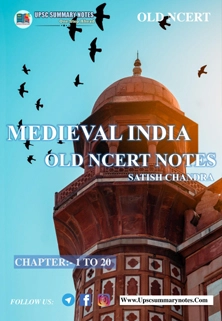
![1 Medieval History Old Ncert Satish Chandra Pdf Notes [2024]](https://upscsummarynotes.com/wp-content/uploads/2023/06/1-7.webp)












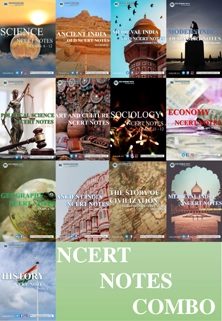
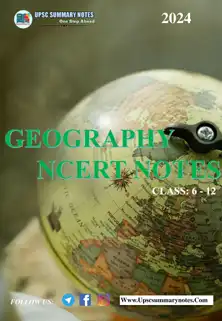
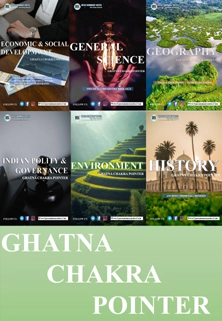
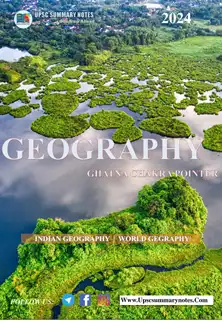
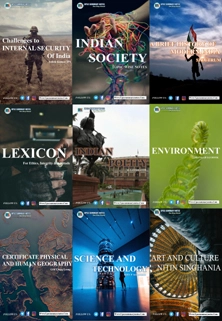


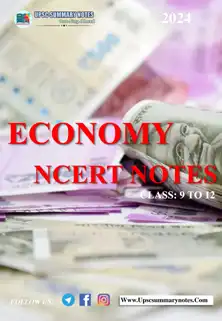
Bhanu Partap –
Accurate and well drafted.
Gunjan Singh –
One of the best notes in terms of content.
Sibananda Mahakhuda –
Simply outstanding..
Divyanshu Kr. –
Value for money
Himanshu Patel –
Best notes for the competitive aspirants. After reading 📚 this Old Ncert notes I analyze the content of this notes is very excellent.
Manish Adhikari –
Chapters well explained in short. Go For It! 😀